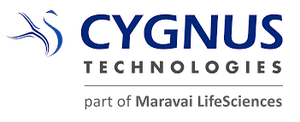
Analytical Method Validation Challenges for Advanced Therapies: Using Gene Therapies as an ExampleAnalytical Method Validation Challenges for Advanced Therapies: Using Gene Therapies as an Example
Due to novelty and complexity in molecular characteristics and manufacturing, validation of analytical methods for ATMPs can be challenging.

Quality control (QC) is a fundamental aspect for assuring the safety and efficacy of medicinal products. Testing of drug substances (DSs) and final drug products (DPs) is performed at intermediate manufacturing stages to confirm that they meet established specifications as defined in a marketing authorization. This does not differ for advanced-therapy medicinal products (ATMPs). Because of the novelty and complexity in their molecular characteristics and manufacturing processes, however, validation of analytical methods for ATMPs can be particularly challenging.
ATMPs represent a novel class of complex biological products that are at the forefront of scientific innovation and hold great potential to improve healthcare. European regulators classified this heterogeneous group of pharmaceuticals into three main categories: gene-therapy medicinal products (GTMPs), tissue-engineered products (TEPs) and somatic cell-therapy medicinal products (CTMPs) (1). The latter category encompasses biological medicines containing or consisting of cells that either have been subject to substantial manipulation to change their biological characteristics or that are not intended to be used for their original function.
Many ATMPs are in development for (ultra)orphan indications and originate from academic research and development (R&D) groups. Transferring the associated manufacturing and testing activities from an academic setting to a good manufacturing practice (GMP) environment can be difficult. The primary focus in non-GMP R&D institutions often is on cell manipulation rather than regulatory quality and compliance. Because GMP regulations do not apply at the preclinical phase, such organizations usually lack regulatory and GMP expertise.
Analytical Target Profiles
Product developers determine what DS/DP attributes need to be tested for obtaining the necessary information about product quality, safety, and efficacy during early development. Information gathered from those test results supports the establishment of an analytical target profile (ATP) that defines a required range in quality criteria for key performance characteristics of a product. Ranges defined in the ATP connect a product’s critical quality attributes (CQAs) to its ultimate release specifications.
Thus, establishing the ATP range for each assay in relation to CQAs during early phase product development should be a priority helping to provide clarity and direction for ongoing analytical and process development. A timely start to ATP setting also prevents nonproductive development work, ultimately saving time and money. Establishing product and analytical characteristics and measuring them consistently help to support regulatory submissions and claims of comparability during later phases.
As a product develops and gets characterized, its associated analytical methods also move from the R&D stage into GMP manufacturing. From clinical testing onward, analytical methods are routinely used, monitored, and subjected to continual improvements that are managed through formal protocols. This is known as the analytical product life cycle, guidance for which is given in a new draft document from the International Council for Harmonisation of Technical Requirements for Pharmaceuticals for Human Use (ICH) (2).
Analytical Method Validation
Once a product has been manufactured in accordance with GMP requirements, its associated analytical test methods must be validated and described in the associated technical dossier for market authorization. Depending on the type of product and analytical technology, method validation can be a complex endeavor. ICH Q2R1 provides guidance that can help QC laboratories in considering which analytical-method characteristics are applicable (3). Despite available literature, validation of analytical methods for ATMPs is further complicated by inherent variability in starting materials, their complex biological features, and the associated manufacturing processes. Other problematic factors include a limited batch history, limited sample availability due to small batch sizes and high manufacturing costs, and a lack of available assay references and controls for ATMP products in development.
Analytical Challenges for ATMPs
Unlike more mature biopharmaceutical modalities such as monoclonal antibodies (MAbs), ATMPs such as those based on adenoassociated virus (AAV) vectors are highly heterogeneous. Their analytical techniques and manufacturing workflows are the subject of intense development, optimization, and change. Methods used to support ATMP drug development and release are at three levels of maturity that affect their expected analytical development and validation time costs.
Fully Mature: Analysts often can leverage established methods developed for mature biopharmaceuticals to assess analogous characteristics in ATMPs. Examples include excipient-testing protocols for antifoam clearance and techniques for monitoring host-cell protein (HCP) and host-cell DNA impurities. Those methods are relatively easy to implement from the earliest phases of development, often with kit-based assays and fully GMP analytical systems and software.
Needs Development: A second group of assays is commonly found in GMP QC release laboratories. Such assays take advantage of fully developed analytical platforms and software but require further development effort and special attention during validation for ATMPs. Examples in this second group include methods for measuring characteristics such as
• posttranslational modifications (PTMs) of capsid proteins by peptide mapping
• relative quantification of capsid proteins by liquid chromatography (LC) or capillary electrophoresis (CE) with ultraviolet-fluorescence detection (UV/FLD)
• aggregate analysis and protein impurity determinations by size-exclusion chromatography (SEC).
Further development will be required, but such methods do use many technologies that are found in most established GMP QC release laboratories around the world. Companies using such established technologies can take advantage of the fully developed analytical platforms and software packages available for such purposes. Additional considerations come up during assay development and validation of methods based on equivalent assays used for MAb and other products.
For example, assessment of PTM measurements at the peptide or protein level must consider to what extent sample preparation disrupted viral capsids. SEC and other particle-sizing methods need to be suitable for large monomers and aggregates. AAV molecules are >30 × larger than MAbs, and protein concentrations are likely to be significantly lower in AAV process streams, making sensitivity a consideration. MAbs often are manufactured to concentrations >100 mg/mL, whereas AAV processes are likely to have protein concentrations of <0.05 mg/mL in batches of significantly lower volumes. Protein-impurity assessments also are likely to be performed with protein concentrations significantly lower than those observed for antibody methods, even at levels that are too low for many established procedures.
Immature: The third group of assays relies on uncommon techniques in pharmaceutical release settings. For AAV, such methods might be needed to quantify empty and full capsids and to measure infectivity and potency. AAVs are highly complex, and methods to measure that complexity are likely to require significant development and optimization to be appropriate for use in a GMP setting. Such methods could change the most in early development, leading to significant extra work in proving comparability of results over the course of the assay life cycle. That can bring uncertainty to setting specifications in early phases. Techniques such as analytical ultracentrifugation (AUC) and cryogenic electron microscopy (cryoEM) are more than capable of evaluating empty, full, and partial AAV species, but neither is used routinely in GMP settings. Thus, those methods have no commercially available Annex 11– or 21 CFR 11– compliant software that could be used as part of system qualification in a GMP environment. The lack of such assistance can take considerable time during later-stage validation activities close to product commercialization.
Potency: Because ATMPs exhibit complex mechanisms of action (MoAs), special attention should be given to the development of a suitable potency assay as early as possible in a program. Recognizing the difficulties associated with developing analytical methods that can describe the elements of an ATMP MoA quantitatively, regulatory agencies suggest adopting a “phase-appropriate” (4) approach to potency-assay method development. It is often difficult to develop a potency assay that is relevant to the intended MoAs, able to quantify biological activity while being tolerant to heterogeneity in both the product and assay components, and has the potential of being qualified or validated according to the stage of the program. Potency assays must generate quantifiable results that reflect the different elements of the MoA. Ideally they are predictive of clinical efficacy and can be performed in a useful timeframe. Qualifying these types of assays before first-in-human studies and validating before pivotal clinical trials alongside the establishment of appropriate and well-justified release limits are likely to be major obstacles in the development of any ATMP, but especially difficult with cell therapies.
Sample Availability and Reference Standards: As mentioned above, the amount of ATMP material that is manufactured is often very small. Some bespoke medicines are limited to just the amount that serves as the dose given to a single patient. Reference materials are not always available for novel and complex ATMPs, which makes it even more difficult to demonstrate that developed tests and procedures will be suitable for their intended uses. Interim references can be used in such circumstances to provide a level of continuity and confidence in the analytical methods applied — particularly as these interim references are developed through their analytical life cycles. Reference standards should be as representative of a manufacturing process as possible and ultimately might need to be replaced as a process develops, requiring appropriate bridging studies. Wherever reference standards are unavailable, assay controls can help to demonstrate consistency and help to prove representativeness through the drug-development life cycle.
Data from reference standards and analytical controls are used to set assay acceptance criteria that may be wide in range compared with those of other modalities at the clinical-testing stage. However, as an ATMP’s development progresses, the associated assay results can help to provide assurance of manufacturing consistency. Trending results over time should confirm release criteria. Where inter/intraassay variability is present, studies should be performed to ascertain and understand its cause. In line with ICH Q14, design-of-experiments (DoE) studies could be useful in designing such studies and can help developers conserve limited sample amounts (2).
Regulatory Communications
Throughout the development process, we recommend continued and frequent dialogue with regulatory agencies. Such communications should include details of draft analytical strategies. Those will help ATMP developers focus their efforts for continued analytical development and validation. Ongoing dialogue also builds an understanding and justification for areas in which sample and data availability may be limited. Regulatory agencies also might enable gradual reduction of release criteria once it becomes clear that those criteria are either irrelevant to safety and efficacy or made redundant by process robustness.
Assay Comparability
Storage and prudent use of retained samples from all key process lots could be critical to establishing assay comparability or for use in analytical bridging studies later in an ATMP’s development process. Notably, that has been the case where assays required significant development and processes have undergone significant change, as is likely with ATMPs. In addition, the development of platform approaches to all related analytics should be considered. Although these technologies are emerging, data from similar molecules — for example, other vector serotypes in viral gene therapy — can be leveraged to support method development, validation, and specification-setting activities wherever appropriate.
Release analytics for new modalities can bring unique challenges with their use of new techniques, a lack of historical data, and increasingly complex MoAs. But that is not the case for the majority of assays used in release of ATMPs. A significant proportion of the required analytics is either compendial or based on well-established procedures. Time and effort can be focused more easily by following a systematic approach as defined in ICH Q14 (2). Appropriate application of experience and an understanding of both the technical capabilities of a given analytical method and related GMP requirements will enable generation of a suitable strategic plan. Those skills can guide appropriate development of analytical methods to ensure the quality, safety, and efficacy of ATMPs to meet regulatory expectations.
References
1 Advanced Therapy Medicinal Products: Overview. European Medicines Agency: Amsterdam, Netherlands; https://www.ema.europa.eu/en/human-regulatory/overview/advanced-therapy-medicinal-products-overview.
2 ICH Q14. Analytical Procedure Development. International Council for Harmonisation of Technical Requirements for Pharmaceuticals for Human Use: Geneva, Switzerland, 24 March 2022; https://database.ich.org/sites/default/files/ICH_Q14_Document_Step2_Guideline_2022_0324.pdf.
3 ICH Q2R1. Validation of Analytical Procedures: Text and Methodology. International Council for Harmonisation of Technical Requirements for Pharmaceuticals for Human Use: Geneva, Switzerland, November 2005; https://database.ich.org/sites/default/files/Q2%28R1%29%20Guideline.pdf.
4 CBER. Guidance for Industry: Potency Tests for Cellular and Gene Therapy Products. US Food and Drug Administration: Rockville, MD, January 2011; https://www.fda.gov/files/vaccines,%20blood%20%26%20biologics/published/Final-Guidance-for-Industry–Potency-Tests-for-Cellular-and-Gene-Therapy-Products.pdf.
Corresponding author Patrick Nieuwenhuizen is director and senior consultant ([email protected]), and Christopher Rogers is senior manager of regulatory affairs ([email protected]) at PharmaLex Ireland, Suite 2, Stafford House, Strand Road, Portmarnock, Co. Dublin, Ireland. For inquiries contact Elizabeth Hunt at [email protected]; https://www.pharmalex.com.
You May Also Like




